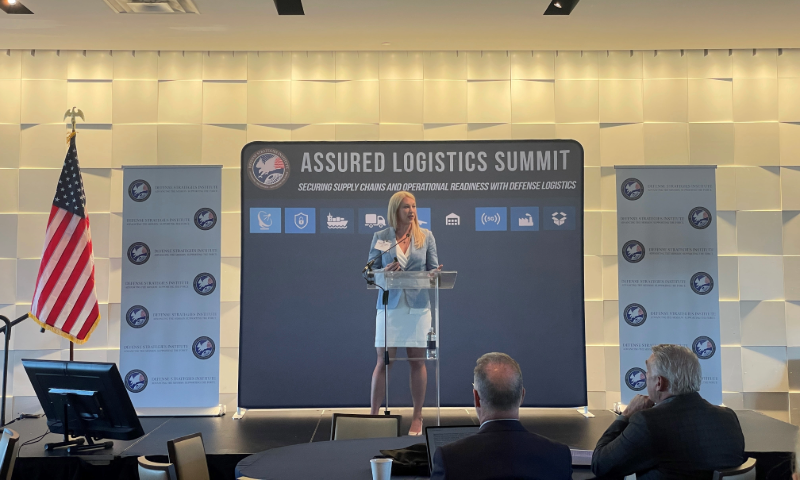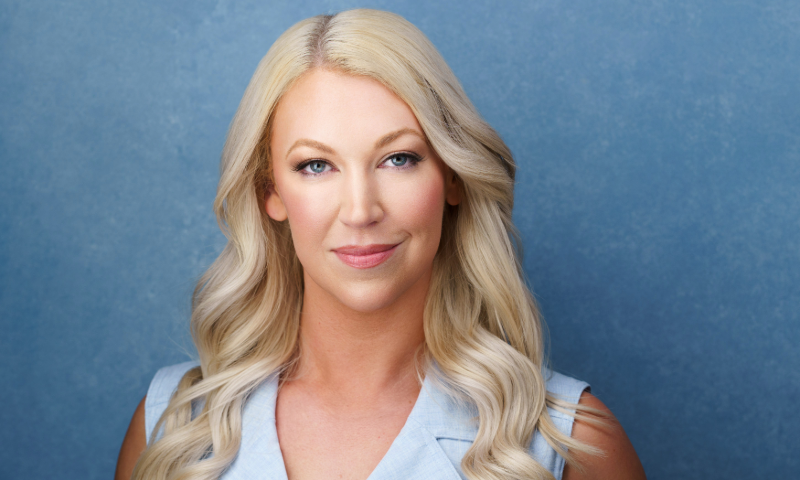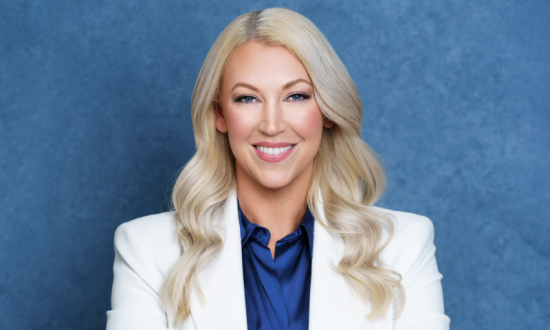Theresa Campobasso, Senior Vice President of Strategic Accounts at Exiger, brings over 16 years of experience in supply chain security, innovation, and risk management to both public and private sector customers. Prior to Exiger, she led the development of an award-winning microelectronics supply chain software at KPMG. Theresa served as a US Marine Corps intelligence officer and provided supply chain risk expertise at the Defense Intelligence Agency. She is a graduate of the University of Notre Dame and the Georgetown Security Studies Program. She publishes frequently on critical supply chain issues, was named a 2023 Top Supply Chain Executive to Watch and is featured in the June issue of Technology magazine.
Recently, in an exclusive interview with Digital First Magazine, Theresa shared her professional trajectory, insights on diversity and inclusion, the biggest security risks in supply chain to keep an eye on in 2024, future plans, pearls of wisdom, and much more. The following excerpts are taken from the interview.
Hi Theresa. Please tell us a bit about yourself. What motivated you to pursue a career in supply chain?
I have been passionate about supply chain risk and security for almost my entire professional life! My first exposure to supply chains was in my first job as an Intelligence Officer with the US Marine Corps where I was exposed to different ways that a supply chain vulnerability or risk could impact military security. After leaving the military in 2013, I found myself working as a national security risk analyst for emerging technology. I was working on a team focused on examining how hidden supply chain risks and vulnerabilities can hurt both public and private organizations and I struggled to find the right tools and technology to enable my team to effectively solve this problem. By 2017, I had realized that even though there were many solutions focused on third party risk and supply chain resilience, at the time there really wasn’t any one solution or technology that was looking to address all of the holistic drivers of supply chain risk in a way that kept pace with the rapid nature of the acquisition process as well as the dynamic nature of supply chain risks, both inherent like supplier financial risk, or external like natural disasters. At that point, I decided to transition into the private sector because I knew I was passionate about helping to solve these tough problems and wanted to be a part of developing the tools and technology that organizations need to make a meaningful impact in identifying and managing supply chain risk. That decision is what brought me to Exiger, where I’m lucky enough to get to do exactly that!
What do you love the most about your current role?
The absolute best part of my job is talking to people about how to tackle really tough supply chain risk management challenges, especially when it might seem impossible or overwhelming. Sharing my excitement for solving these problems gives me so much energy and satisfaction. Many of my client organizations don’t know where to start when it comes to establishing and maintaining truly effective supply chain programs, and I can empathize- the definition of a supply chain has changed so much in the recent past- the term now encompasses both physical and digital supplier ecosystems. Additionally, the types of emerging technology solutions that are available to organizations to help manage supply chain risks, provide transparency into supplier networks, optimize supply chain processes, and reduce cost or increase resilience are increasing rapidly. This makes it a very exciting time for businesses to tackle supply chain risks because of all of the new opportunities to gain insights to make more impactful decisions, but it’s also a time of friction due to rapid change, an explosion of data and capabilities, and a departure from the “legacy” definition of a supply chain as primarily a related set of entities related to production of a physical product. Organizations can feel overwhelmed when it comes to managing these risk variables, getting insight and transparency into their own sub-tier supplier network, and making sense of the best way to leverage all of the new technology and data available to them. Helping these organizations figure out where to start, how to mature their programs, and how they can reduce risk and increase resilience is incredibly exciting for me. I love helping customers understand where and how to start making their supply chains safer, more compliant, and more resilient!

What are your thoughts on diversity and inclusion in your field? How important is it to have authentic conversations with leaders, professionals, and changemakers to create more acceptance across the globe?
Diversity and inclusion are essential in supply chain, driving innovation and reflecting the diverse world we serve. I have seen firsthand how a diverse team brings a variety of perspectives to solving tough problems, and these different perspectives often spark creativity which leads to better problem solving and higher-performing teams. I think inclusion is really important for high-performing teams too. Personally speaking, I have always found that my own contributions to a team or a challenge are higher quality when I’m working in an environment where I feel valued and supported, and I really try to be intentional about creating that type of environment for others. When team members feel included, they’re often happier, more connected, and more effective, which is better both for our business’s performance and also for the well-being of the individual. Creating teams with this dynamic doesn’t happen magically overnight. It requires engaging corporate leaders and stakeholders to solidify intentional support for diversity and inclusion, and then educating the professionals working in or with the team about how the business plans to set them up fir success from a cultural perspective. These dialogues help break down barriers and build mutual understanding. I think that championing diversity and inclusion is a huge part of building better, happier teams and communities.
The meaning of leadership can change from one era to the other, how would you define the meaning of leadership today?
To me, leadership in 2024 is not just about guiding a team to achieve targets, but also about empowering each member to reach their full potential. In my experience, teams perform best when they feel supported and enabled to be successful, so my goal as a leader is always to show my commitment to those core values through creating a culture based on integrity, innovation and collaboration in addition to achieving business goals. Additionally, a critical part of enabling someone to succeed is to give them honest feedback about their performance against expectations and how they can improve, even when the conversations are difficult to have. Being honest and direct shows respect for team members and helps create a culture of trust and transparency, which is essential for any organization to be able to weather stressful situations, deadline pressures, and other sources of stress.
Where or whom do you seek motivation and inspiration from? How?
I am incredibly fortunate to have an amazing network of mentors and professional colleagues that I have met throughout my career, from former graduate school professors to former bosses and coworkers to people I have met through professional organizations here in DC. I intentionally prioritize ways to stay in touch with this community and am constantly blown away by all of their interests and passions, and I feel like I can always ask them for their thoughts if I’m ever stuck in a rut or want a s second opinion on the best way to handle a new situation. I am also always on the lookout for inspiration through books and podcasts too!
What is your secret to striking a work-life balance?
This is a tough question, because I don’t think there is a secret to a successful work-life balance! Even when I consciously try to achieve balance with my work duties and my life outside of work, I don’t always succeed, and I am always looking to learn better ways to navigate this issue. However, there are a few things that I have found helpful, especially as I have grown into more senior roles with more duties and responsibilities. Firstly, I have really changed the way that I have intentionally planned and prioritized my time, especially when it comes to mental and emotional health and feeling burned out. I also try to set a good example for my own team by taking time away from work to recharge and create an environment where they feel comfortable and able to do the same.
What are the biggest security risks in supply chain to keep an eye on in 2024?
This is an exciting question, since there are so many good options! Here is what I think will continue to be absolutely essential for supply chains in 2024:
- Cybersecurity Threats: Supply chains continue to become more digitized, and they are increasingly vulnerable to cyberattacks such as ransomware, data breaches, and phishing attacks. Ensuring robust cybersecurity measures is critical to protect sensitive data and operational integrity.
- Third-Party Risks: Many supply chains rely on multiple third-party vendors and partners. Weak security practices or breaches at any point in the chain can compromise the entire network. It’s essential to enforce stringent security standards and continuous monitoring for all partners.
- Supply Chain Disruptions: Natural disasters, geopolitical tensions, and raw materials shortages will continue to disrupt supply chains. Building resilience through diversified sourcing, robust contingency planning, and real-time monitoring is vital to mitigate these risks.
- Counterfeit Products: The risk of counterfeit goods entering the supply chain can damage brand reputation and pose safety risks, and for certain industries, counterfeit products have been on the rise following the COVID-19 pandemic.. Technologies like blockchain can enhance traceability and authenticity verification.
- Regulatory Compliance: Keeping up with evolving regulations and standards across different regions can be challenging in 2024, especially as different geographic regions implement different guidance relating to topics like modern slavery and “Net Zero” climate security. Non-compliance can lead to legal penalties and operational disruptions. Ensuring compliance through continuous monitoring and adaptation is essential.

What role do you see technology playing in improving supply chains?
Technology plays a pivotal role in improving supply chains by enhancing efficiency, transparency, and resilience. Advanced technologies like artificial intelligence (AI), internet of things (IoT), and blockchain streamline operations, enabling real-time tracking and predictive analytics to optimize inventory management and reduce delays. Automation and robotics improve accuracy and speed, reducing human error and operational costs. And most importantly in my opinion, advances in data science enable better and more predictive risk assessments for both physical and digital supply chains. This means that organizations can get transparency into the entities in every tier of their supplier network down to the raw material level (or the code level, if discussing a software product), and surface the hidden risks in that network. This is exciting because once organizations have that visibility and transparency inti the hidden risks in that holistic supplier ecosystem, they can take action to manage and mitigate those risks, and can actually show how their actions make a measurable positive impact to their organization, which can be a really powerful success story!
You are a successful supply chain security innovator & leader. Which three-character traits do you think were most instrumental to your success?
I think that three character traits I have intentionally cultivated and leveraged throughout my career are integrity, empathy, and perseverance. Integrity ensures that I communicate with honesty and respect to others, and I speak up when a situation or a person’s behavior doesn’t align with my values, even when it’s uncomfortable. I believe that integrity is essential for transparency and accountability, and I always hope to earn trust from my team, my leaders, my network, and my customers. Empathy ensures that I am always seeking to understand the needs and perspectives of others as I interact with them, whether it be my own team members or customers. And finally, perseverance is the key to moving forward despite significant obstacles like failure, doubt, and other external factors. Persevering in the face of adverse conditions is not only critical for business success, but also essential for growth as an individual and a leader, and one of my goals is to always be growing and progressing in some way, even if it ends up being a different way than I had originally planned.
Where do you see yourself in the next 5 years?
I would love to still be working in supply chain risk solutions in the next 5 years! There are so many emerging technologies that impact supply chain that will continue to mature in the next 5-10 years, and I can’t wait to see how those new advances change the options that organizations have for managing supply chains! Additionally, the geopolitical landscape and the nature of supply chain risk is constantly evolving and changing that I feel like there will be so many new challenges to learn about, which is exciting to me. Lastly, I hope that I can continue to work in a role where I can lead a team to help educate and coach people about supply chain risk to help get them as excited about solving these problems as I am!
What advice do you have for the people in charge of supply chains at big companies?
The best advice I can give to supply chain leaders at organizations of any size is to really invest in their supply chain programs! I would love if every organization’s supply chain program would identify one change they could make to measurably increase their program’s maturity and professionalization, which will in turn lead to increased effectiveness. This might look different for every organization depending on their starting point, but could mean prioritizing implementation and management of an effective supply chain risk management program that goes beyond the basic traditional supply chain risks like optimization, cost avoidance, third party due diligence, and resilience, and instead opening the risk aperture to include more “hidden” driver of supply chain vulnerability, like cybersecurity, personnel security, product risks, and other issues. It could also mean experimenting with new ways to leverage emerging technology and new data sources to help make better decisions around supply chain efficiency, risk, and resilience. It could also mean enabling their supply chain teams to stay current on risks, threats, vulnerabilities, and security issues. Regardless of the starting point, committing to making one significant change to mature their supply chain programs will pay dividends for organizations in the future.






